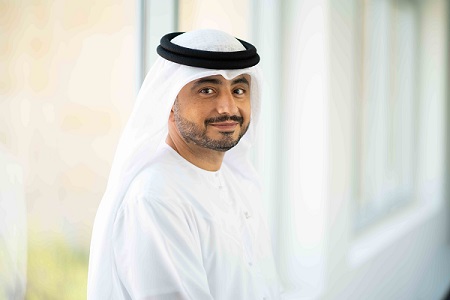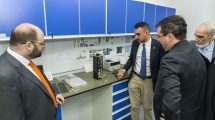
Yahsat has reported a 3% year-on-year decline in revenue, reaching AED 734m ($200m). Despite the drop in revenue, the company’s EBITDA improved significantly by 25%, totalling AED 566m ($154m). Additionally, net income saw a robust increase of 62%, reaching AED 269m ($73m).
On a normalised basis, which adjusts for significant one-off items to allow for like-for-like comparison, EBITDA remained stable compared to the previous year at AED 462m ($126m). Similarly, normalised net income stood at AED 175m ($48m), maintaining stability despite the impact of UAE corporate tax, which Yahsat adopted for the first time this year.
The company’s resilient performance was attributed to revenue growth across two key segments. The Infrastructure segment, Yahsat’s largest, which provides communication capacity to the UAE Government under an index-linked long-term contract, saw a 1% year-on-year revenue increase. The Managed Solutions segment, offering comprehensive value-added satellite communication solutions primarily to the UAE Government and related entities, experienced impressive revenue growth of 15%, while maintaining robust EBITDA margins of over 60%. The Mobility Solutions segment, which offers mobile satellite services using the L-band spectrum, recorded a decline in revenue, mainly due to reduced equipment sales following the Thuraya 3 satellite anomaly in April 2024. The Data Solutions segment, providing satellite-based broadband data solutions, also saw a slight revenue decrease due to fewer subscribers and related equipment sales, as the business shifts towards higher-margin markets.
Yahsat reported a contracted future revenue of AED 24.5bn ($6.7bn), equivalent to approximately 15 times the last twelve-month revenue, only 2% lower compared to the beginning of 2024. The company’s strong cash generation resulted in Discretionary Free Cash Flow (DFCF) of AED 287m ($78m), slightly below the previous year but surpassing expectations.
The company also highlighted a robust balance sheet, with a strong cash position of AED 1.5bn ($398m) and minimal net debt of AED 115m ($31m). Yahsat expects to receive AED 3.7bn ($1bn) in new advance payments during the construction period of the Al Yah 4 and Al Yah 5 satellites. Additionally, the company has access to an AED 1.1bn ($300m) bridge facility, partially drawn down in July, providing long-term visibility and security of future cash flows until 2043.
Yahsat reiterated its guidance for revenue, EBITDA, and cash flow for the full year. However, it revised its expected capital expenditure (CapEx) lower, to AED 1.5-1.6bn ($400-430m) from the previous estimate of AED 1.7-1.8bn ($470-500m), following the full procurement contract signing for Al Yah 4 and Al Yah 5 with Airbus in June 2024.
Ali Al Hashemi, Group Chief Executive Officer of Yahsat, commented: “Yahsat has achieved another set of resilient results, demonstrating solid growth in our core government business, offsetting headwinds in our mobile satellite services segment.
“We continue to progress toward finalising the full contract for the new US.1bn Capacity and Managed Services Mandate with the UAE Government and have signed, during the last quarter, the full procurement contract with Airbus for two new satellites, Al Yah 4 and Al Yah 5. Further, we continue to work towards a successful launch of the Thuraya 4 next-generation satellite in the fourth quarter of this year, which will significantly upgrade Thuraya’s capabilities and product line for many years to come.
“Finally, we are looking forward to completing the merger with Bayanat in the second half of the year and are finalising plans for the successful integration of both companies. This merger will position the new combined entity – Space42 – as an AI-powered space technology champion in the MENA region with global reach. For the first time in our industry, we will combine advanced satcom solutions and geospatial analytics, operating communication and Earth Observation satellites across multiple orbits.”














Add Comment